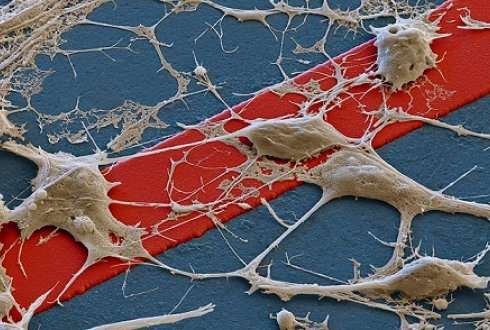New test methods can reduce the amount of animal testing

Making more use of in-vitro testing, the upcoming 21st-century scientific fields known as 'omics' sciences and developing smart test strategies can clearly reduce the amount of essential animal testing. This is the view of Professor Bennard van Ravenzwaay in his inaugural speech on accepting the endowed chair in Reproduction and Developmental Toxicology at Wageningen University on 2 May. His chair will be funded by BASF and is part of the sub-department of Toxicology.
In his inaugural speech, Innovative approaches to reduce animal testing, Professor Van Ravenzwaay reviews the ways in which animal testing using rats, mice and fish can be reduced. To support his view, he uses the information generated by such animal testing and explores whether that knowledge can be acquired in other ways. He identifies three fields in which improvements are possible: reduction, refinement and replacement. This therefore extends beyond simply looking for alternatives to animal testing.
By the term reduction, Professor Van Ravenzwaay refers to studies where a minimum number of animals are required to provide clear insight into the potential danger and risk assessment, yet enough to confirm that the research is also reliable. Refinement refers to the avoidance of the most harmful and stressful situations for test animals, for example by only testing on one part of the animal, such as the ear. Professor Van Ravenzwaay wishes to extend the concept refinement with modern methods which make additional animal testing redundant. The so-called 'omics' sciences provide such opportunities. These include new study areas like proteomics (about proteins), transcriptomics (about genes and their expression) and metabolomics (about natural substances in the body). 'Omics data give us insight into how a substance works in the body, so that we need fewer studies and fewer test animals,' according to Professor Van Ravenzwaay.
Replacing test animals
Replacement of test animals is ethically and socially the primary advantage of in vitro studies. But Professor Van Ravenzwaay also mentions other benefits like the opportunity to study more precise issues which are difficult to answer in live animals. 'Two things are important here: you want to know what a substance does to the body, but at the same time what a body does to a substance. In vitro studies cannot answer all these questions. We are therefore developing computer models which make the connection between cells in a test tube and a real animal.'
However, the Wageningen Professor of Reproduction and Developmental Toxicology says that current animal tests, while still essential for assessing safety, are not always optimal. 'Aspirin – sometimes called the world's eighth wonder – would never have been marketed if its toxicological potential had been evaluated against current standards. Studies have shown that aspirin can cause malformations in rats. However, we know that this is not the case in humans. Clearly animal testing does not always provide the correct answer and it is important to improve our understanding about the way in which a substance is toxic.'
Finally, the amount of required test substance in in vitro tests is much less than the mass required in animal testing. A small in vitro study only requires a couple of milligrams, while animal testing easily uses several hundred grams of the substance used. Creating a new substance with special biological properties (such as drugs) is often more expensive than its weight in gold. With in vitro tests, the main adverse effects, such as mutagenicity, endocrine activity, development toxicity, etc. can be discovered very early on in the development of a new substance. This means that a decision can be taken much sooner about whether further development (and the associated animal testing) is useful. 'In vitro tests thus speed up the selection process considerably,' according to Professor Van Ravenzwaay.
















